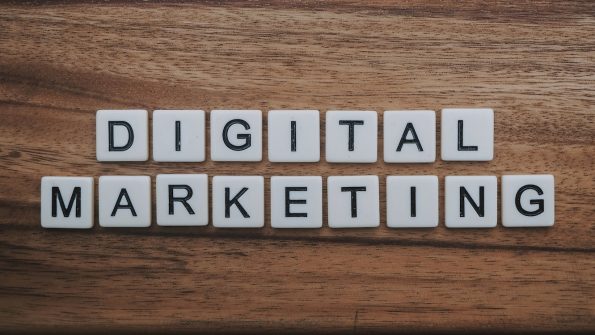How Should Your Business Approach Digital Marketing in 2024?
It doesn’t matter if you run a brick-and-mortar store, an e-commerce portal, or an online-only digital store, digital marketing helps everyone. It has allowed entrepreneurs to experience remarkable growth that would never have been possible with old advertising methods.

photo-1557838923-2985c318be48 (1331×749) (unsplash.com)
It doesn’t matter if you run a brick-and-mortar store, an e-commerce portal, or an online-only digital store, digital marketing helps everyone. It has allowed entrepreneurs to experience remarkable growth that would never have been possible with old advertising methods.
Thus, it’s no wonder that the digital marketing industry is set to be worth over $807 billion within the next two years.
However, digital marketing doesn’t guarantee success, and like many marketing strategies, it also has its share of contingencies to manage. With AI becoming both a positive and a disruptive force in the world, 2024 is shaping up to be a wild ride.
In this article, we will look at what businesses should keep in mind to stay on top of the game and not run into unexpected surprises. Let’s dive in.
Find Ways to Integrate AI Into Your Marketing Efforts
A lot of people still aren’t sure what exactly AI does. ChatGPT was one of the best representations of just how powerful, practical, and revolutionary AI can be. At this very moment, there are thousands of developers working on AI tools to assist with digital marketing. Regardless of your opinion about AI, you will want to get on this train before it’s too late.
So, how exactly can AI marketing help your business? Well, what does AI do really well right now? It’s crunching data and offering insights based on the provided samples. AI can be used to great effect when developing an identity graph and helping predict the kinds of choices that a customer would make.
It can also help massively with content generation, as blog posts, product descriptions, and more are very close to being automated. Another interesting way that AI can help marketing efforts is through conducting sentiment analysis.
It can crawl through text from social media, comments, reviews, and multiple sources to paint an objective picture of your customer’s opinion.
If that isn’t enough, it can also suggest important steps to take in order to address any detected issues or problems.
Social Media Platforms Are Still a Great Option
In the recent past, the role of social media has felt a little unsteady from a marketing perspective. X (formerly Twitter) had its share of drama after being purchased by Elon Musk. Similarly, it looks like TikTok is soon going to be restricted in the country as well.
While it does seem like the tides are turning, Neil Patel, an expert in helping businesses grow, suggests otherwise. His data shows that X ranks at number one in a list of social media platforms with the best return on ad spend. Yes, TikTok does appear, but in fourth place.
Pinterest made it to number two, which might surprise a lot of people. Meanwhile, Meta’s offerings didn’t make it to the top five, with Instagram and Facebook coming in at the fifth and sixth positions, respectively.
What does this mean for you? Well, if you had been relying on the star power of Instagram, it might be worth taking a closer look at your ad investments. In 2024, you may have to pivot and be a little more flexible with changes.
This might mean looking into platforms that you may never have prioritized before, such as X or Pinterest.
Start Finding Better Ways to Build a Customer Profile
According to Intent IQ, it’s important to keep privacy in mind and ensure that any cookieless advertising solution is privacy-compliant.
With Google shifting away from 3rd-party cookies by the end of this year, you will definitely want to be looking for a cookieless advertising solution. The obvious option is to focus on first-party data that you would collect from your own websites, apps, and databases.
Another way to adapt to a world without third-party cookies is to start looking at contextual targeting. This means moving away from the customer’s user behavior and into better ad placement on the webpage. It’s old school in some ways, but this approach can surprise you with how effective it can be.
Similarly, you can also go “cards on the table” mode, and try consent-based advertising. You implement more transparent opt-in mechanisms, make the UI user-friendly, and clearly ask for consent for data collection. Pointing out the benefits that giving consent offers the customer is also a good move.
In conclusion, digital marketing in 2024 will be a time of great change. Some of the established marketing strategies may not be as effective as they used to and adaptability is the need of the hour.
If you can hold the line and make the best of the situation, the new developments can slingshot you into an orbit that’s way above your current position.

